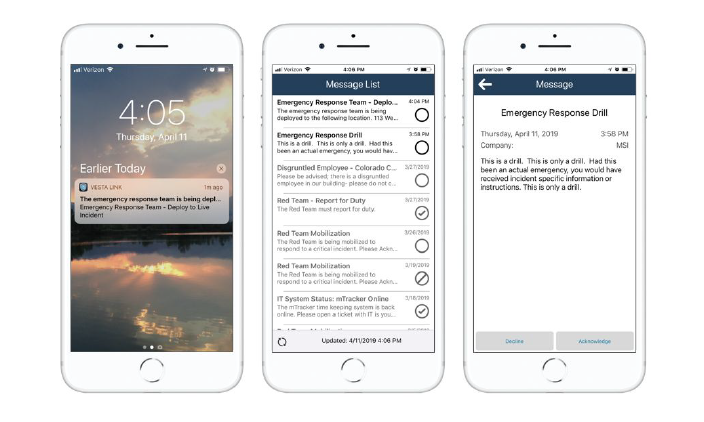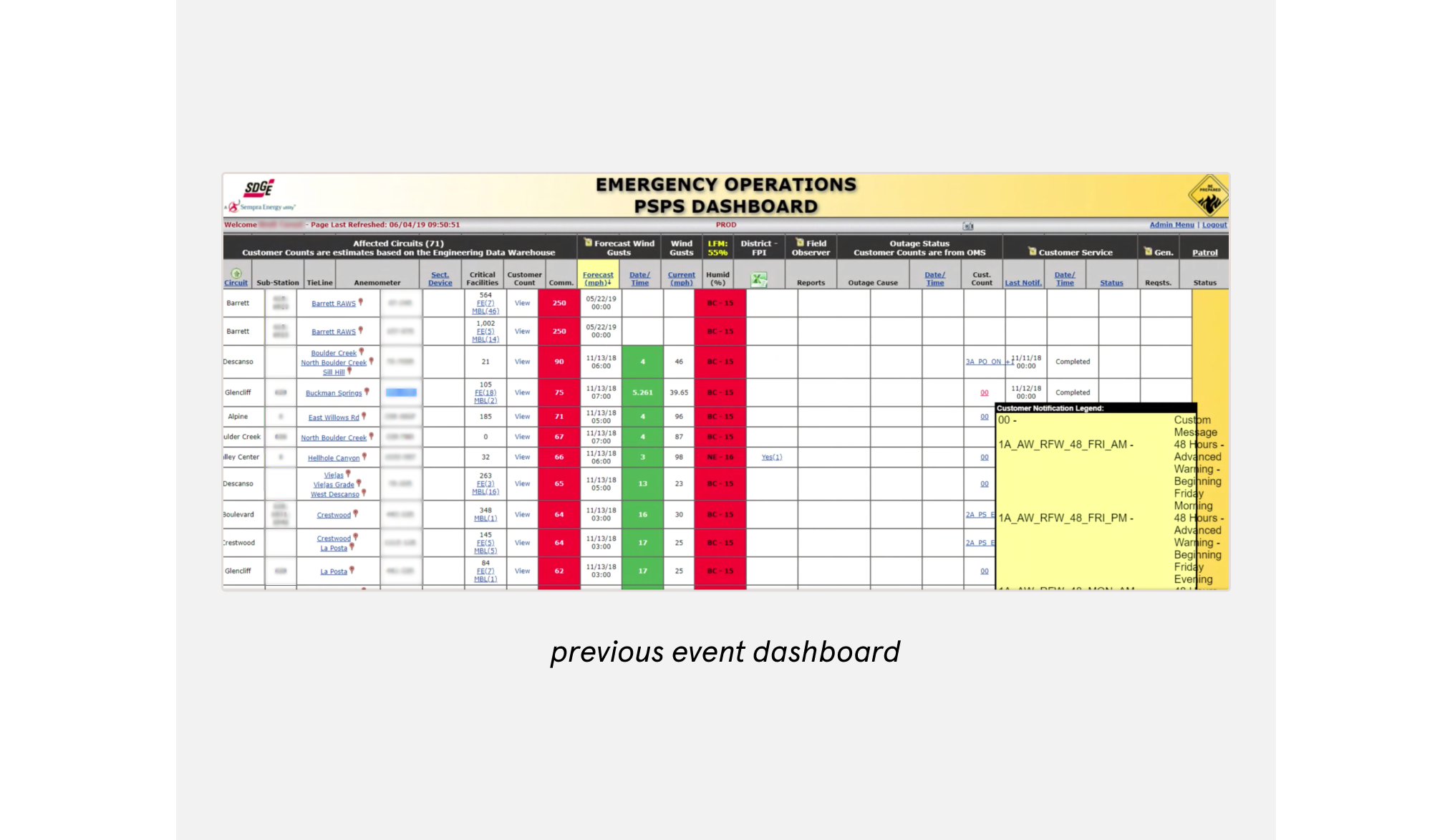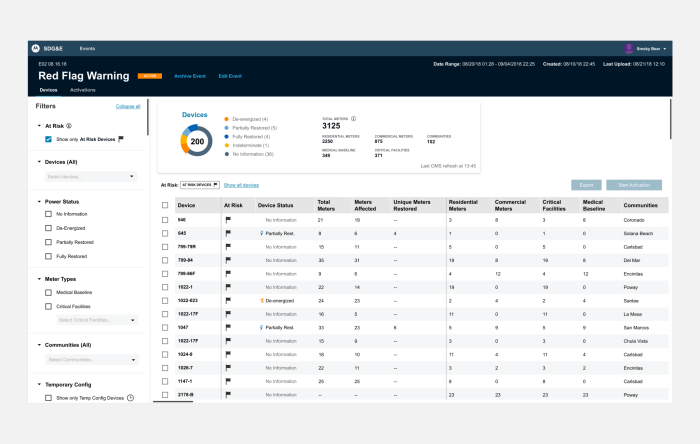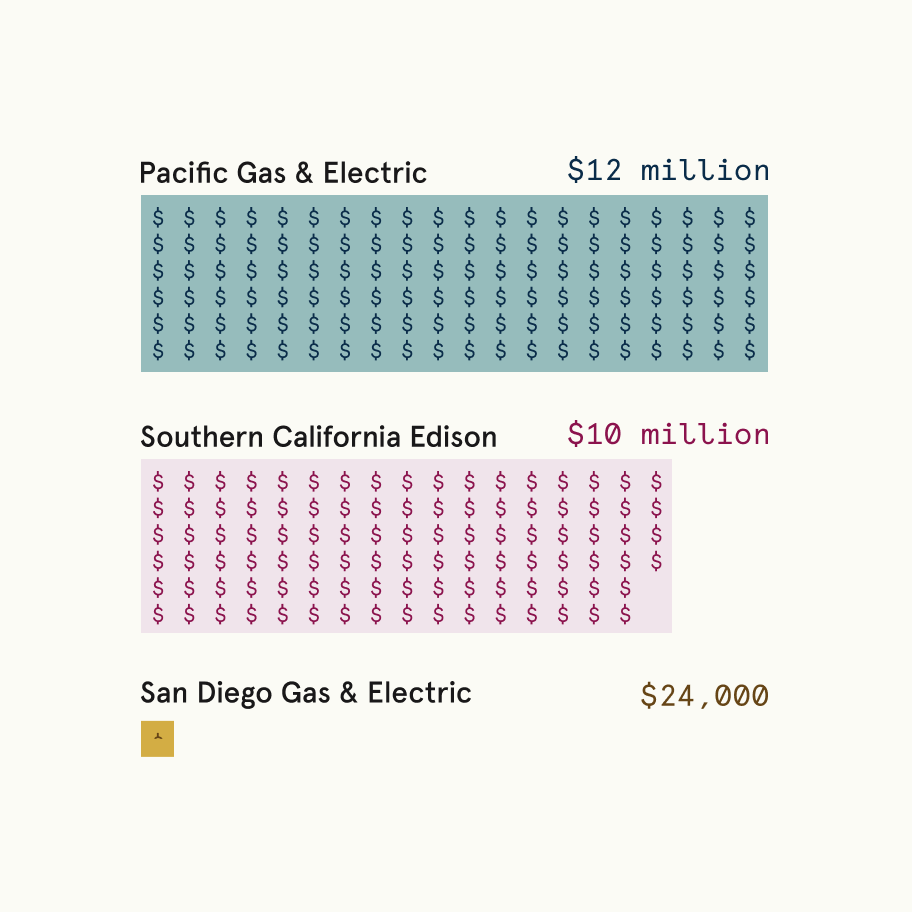Introduction

San Diego Gas and Electric (SDG&E), a subsidiary of Sempra Energy, is a regulated public utility provider that serves 3.7 million homes and businesses in San Diego and southern Orange county, with their service area spanning 4,100 square miles.
The San Diego area has long been known for its beautiful beaches and mild climate. Unfortunately, wildfires have posed a growing problem throughout the state in recent years. To lower wildfire risk, California utility providers perform Public Safety Power Shutoffs (PSPS). This involves shutting off power lines when meteorology conditions indicate a high chance of accidental fire — which means notifying customers when these shutoffs happen.
The Challenge
After the 2018 fire season, the California Public Utility Commission and Office of Emergency Services imposed new regulations to reduce future fire risk, including more robust guidelines around customer notification and post-event reporting.
At different stages of an event, it was now required to report the number of customers contacted and the percentage of those customers who have confirmed receiving the message.
Ultimately, SDG&E’s manual reporting systems were no longer going to be feasible to meet their community’s needs. They engaged Tandem to extend their existing VESTA emergency notification platform (ENS) by better integrating it with other legacy systems and creating a long-term roadmap for process improvements that enabled the product to flex with regulatory changes.
Motorola Solutions’ VESTA Platform

Motorola Solutions’ VESTA is a mass communication platform that enables companies to send emails, phone calls, and text messages to their customers.
SDG&E’s existing VESTA notification system has been in use for 10+ years. With the imposition of California’s new reporting regulations, it was clear they needed software that could handle all situations and notify a growing number of customers.
SDG&E had their own customer databases, but their VESTA platform wasn’t built to handle the connection to large databases — it could only send messages to 5,000 customers at a time. Moreover, their application needed a standardized, implicit process that was person-agnostic. The notification and reporting protocol lived in one employee’s head, and without proper documentation it made for a tricky, convoluted 37-step process.
In-Depth Research
After conducting a three-day on-site requirements gathering session, the Tandem team built a future-forward roadmap for SDG&E’s VESTA application and notification process. Together, we worked to uncover priorities and create less room for assumptions and human error.
Building off of this launch point, Tandem created an app to:
- Implement event statuses
- Forecast at-risk customers
- Filter event data
- View outage information
- Seamlessly send messages through VESTA
- Define Public Safety Power Shutoff (PSPS) notification events
- Export reports that meet new regulations
Intuitive User Experience

Tandem used SDG&E’s legacy systems and infrastructure to create a modern solution that empowers their employees to:
- Create and forecast events based on meteorology data
- View and edit details (like filtering, rollup data)
- Send messages via VESTA
Tandem used Motorola’s COBALT design system to create an intuitive user experience. This upgrade minimized confusion and complexity. Employees could now see critical facilities and communities affected by outages at a glance and onboard new employees faster.
Previously, reports took a long time to load, and employees couldn’t do anything else in the dashboard while they loaded. The new user interface design includes asynchronous background updates so employees can do other tasks within the application while they wait for the report, saving them time during their daily use of the application.
With their new and improved dashboard, operators in SDG&E’s Emergency Operations Center can send critical messages to customers via VESTA in just three clicks, reducing the opportunity for human error.
An iceberg is a great analogy for Tandem’s work on this project — above water, it’s three simple clicks for SDG&E employees to send a message to customers, while underwater the software and data architecture are working and integrating seamlessly with their legacy systems.

Dashboard Core Components
Event Header
Displays the current state of the event
Rollup
Displays key information about the event
At Risk Filter
Displays the filters applied to the device table
Filter Panel
The options to filter the devices in the table by a variety of criteria
Device Table
Displays event devices and allows a user to filter
Streamlined Notification and Reporting Process

Tandem simplified the notification and reporting process from 37 steps to 10, enabling the SDG&E team to help their most at-risk customers during the times when minutes matter.
This simplification alongside thorough documentation empowered SDG&E to not be dependent on one individual with institutional knowledge, preventing the process from having a single point of failure. Now, there is a defined notification and reporting process with a defined workflow, empowering them to efficiently pull and report the needed data.

Streamlining the notification and reporting process also enables SDG&E to send messages faster to more customers. Instead of having to break up their audience and send a message to only 5,000 customers at a time, now they can send a message to 150,000+ customers in one activation.
Tandem also helped deduplicate the system for commercial situations. Previously, one phone number may have gotten 30 calls if there were 30 cellular towers on one device on the grid. Now, the correct number of calls are made, making reporting more accurate. Additionally, SDG&E can now receive response verification, making it easier to take next steps and notify critical customers while complying with California’s regulatory requirements.
Microservices Architecture
Our team created a custom deployment process for SDG&E that was fully tailored to their system and configurations, and integrated to work with eight different existing services on their server system. Constructing this application involved engineering five independent applications that communicate with each other. This microservice architecture allowed each application to have independent deployments, loosely-coupled implementation, and the most efficient and purposeful design possible.

Outcome
With a new, modernized and customized mass communication platform, SDG&E is now empowered to be a more functional team and efficiently help their customers when minutes matter.
They are more connected and confident that their application can handle all situations. The notification and reporting process is efficient, with the new, intuitive user interface making it easy for the entire team to understand and quickly send out critical messages.
Seamless integrations with existing critical applications also means SDG&E can continue to expand their software, making it flexible enough to fit all of their needs and enable them to stay agile. Most importantly, the refreshed application means SDG&E has been able to adapt quickly to the latest reporting regulations, leading to them facing far fewer fines — in 2022, their closest competitor was charged 417 times the fine amounts. [Source: AP News]

Is your alert notification software serving you as well as it could?
Tandem can help customize your system to fit all of your needs.
Contact Us

